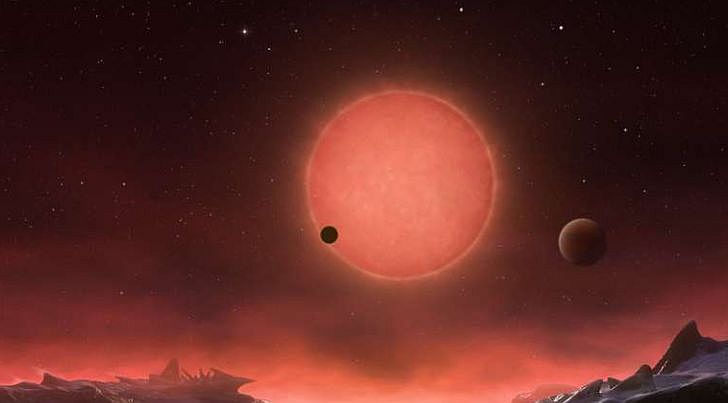
Astronomers at NASA have identified two rocky alien worlds hovering around M dwarf star called HD 260655. M stars have faint glow and they look red to our eyes with temperature ranging from 2,500 Kelvin to 3,500 Kelvin. These stars account for nearly 75% of the stars in our stellar neighborhood, which implies they can be easily observed from Earth due to its abundance.
As per Transiting Exoplanet Survey Satellite (TESS), the newly discovered exoplanets are about two times more massive than the Earth.
TESS is on a mission to identify transiting exoplanets, till now it has tracked 5,600 candidate exoplanets, out of which 205 have been approved so far.
Currently, University of Chicago’s astronomers with the help of TESS have confirmed the planetary nature of the two exoplanets through the precise radial velocity (RV) measurements.
HD 260655 b and HD 260655 c
According to the researchers, their study confirms the presence of a multiplanetary system orbiting the nearby M dwarf HD 260655. Transit observations have also been approved from the HIRES and CARMENES instruments taken since 1998 and 2016, respectively.
The first newly found planet, HD 260655 b has a radius of 1.24 Earth radii and mass is 2.14 times more than Earth. The exoplanet orbits its host star every 2.77 days. And it’s expected that the temperature is around 709 K, that is nearly 2.46 times of our planet.
The second newly discovered planet, HD 260655 c is more gigantic than its neighbour. Its radius is 1.53 Earth radii and mass is 3.09 times more than Earth. It has an orbital period of 5.7 days with temperature around 557 K.
On the basis of the derived densities, HD 260655 b has an equal density with than of Earth’s while HD 260655 c has an internal composition fully made of silicates, and there is an absence of iron composition.
M dwarf HD 260655
The host star HD 260655, is about 32.6 light years away and its nearly 56% smaller and less massive than the sun. Its effective temperature is 3,803 K. With metallicity level of -0.43, the star is expected to be between two and eight billion years old.
Takeaway
The discovery of HD 260655 makes it the fourth nearby multi-transiting planetary system. The first three are:
- HD 219134: an orange-hued star, in the constellation of Cassiopeia. With an estimated distance of 21.25 light years, it is quite close to our solar system.
- LTT 1445 A: it hosts two exoplanets. And is located 22.40 light years away from the solar system.
- AU Microscopii: is a young small star located about 32 light-years away.
These newly found planets are brilliant contenders for further atmospheric studies with the help of the most sought-after James Webb Space Telescope.
More information: R. Luque et al, The HD 260655 system: Two rocky worlds transiting a bright M dwarf at 10 pc. arXiv:2204.10261v2 [astro-ph.EP], arxiv.org/abs/2204.10261



